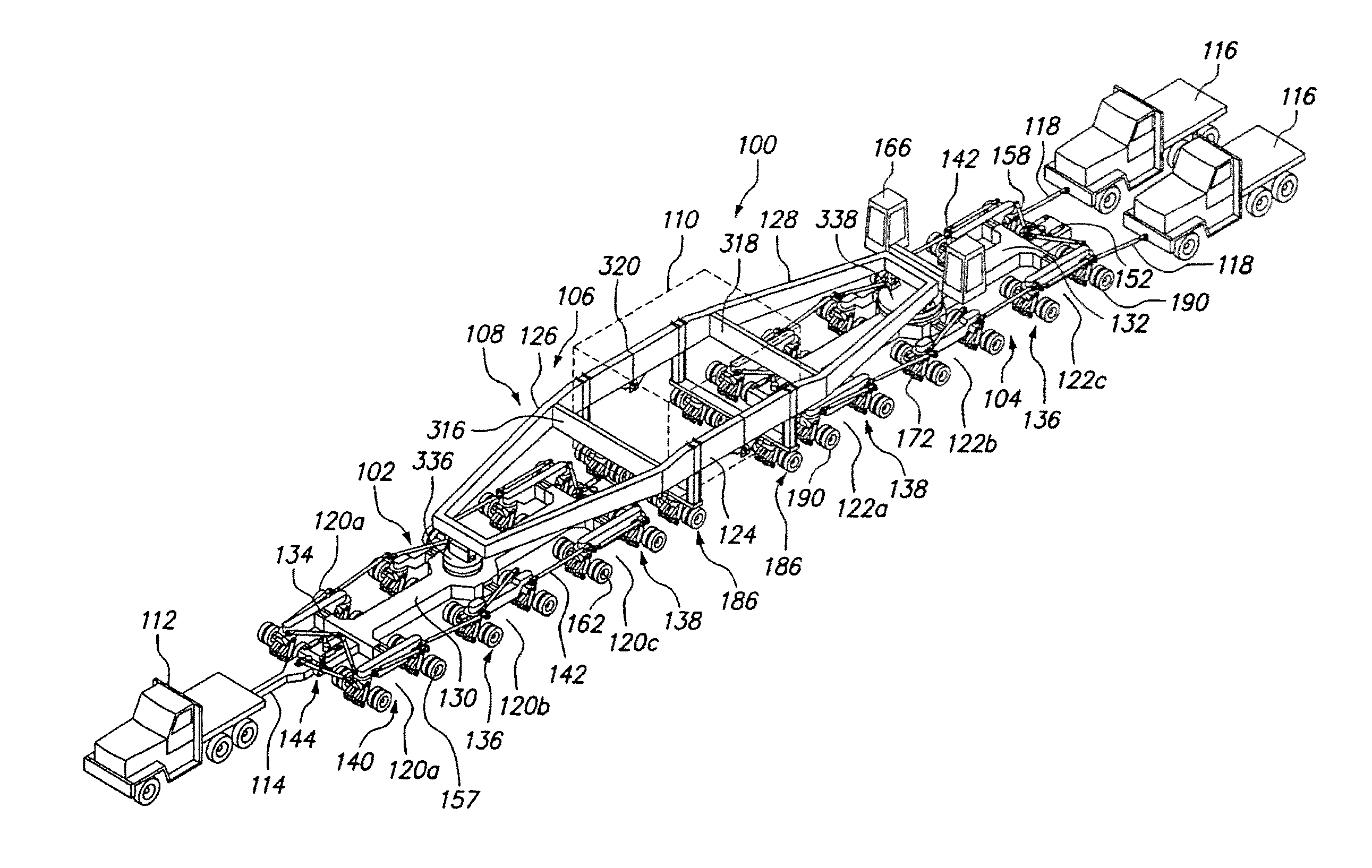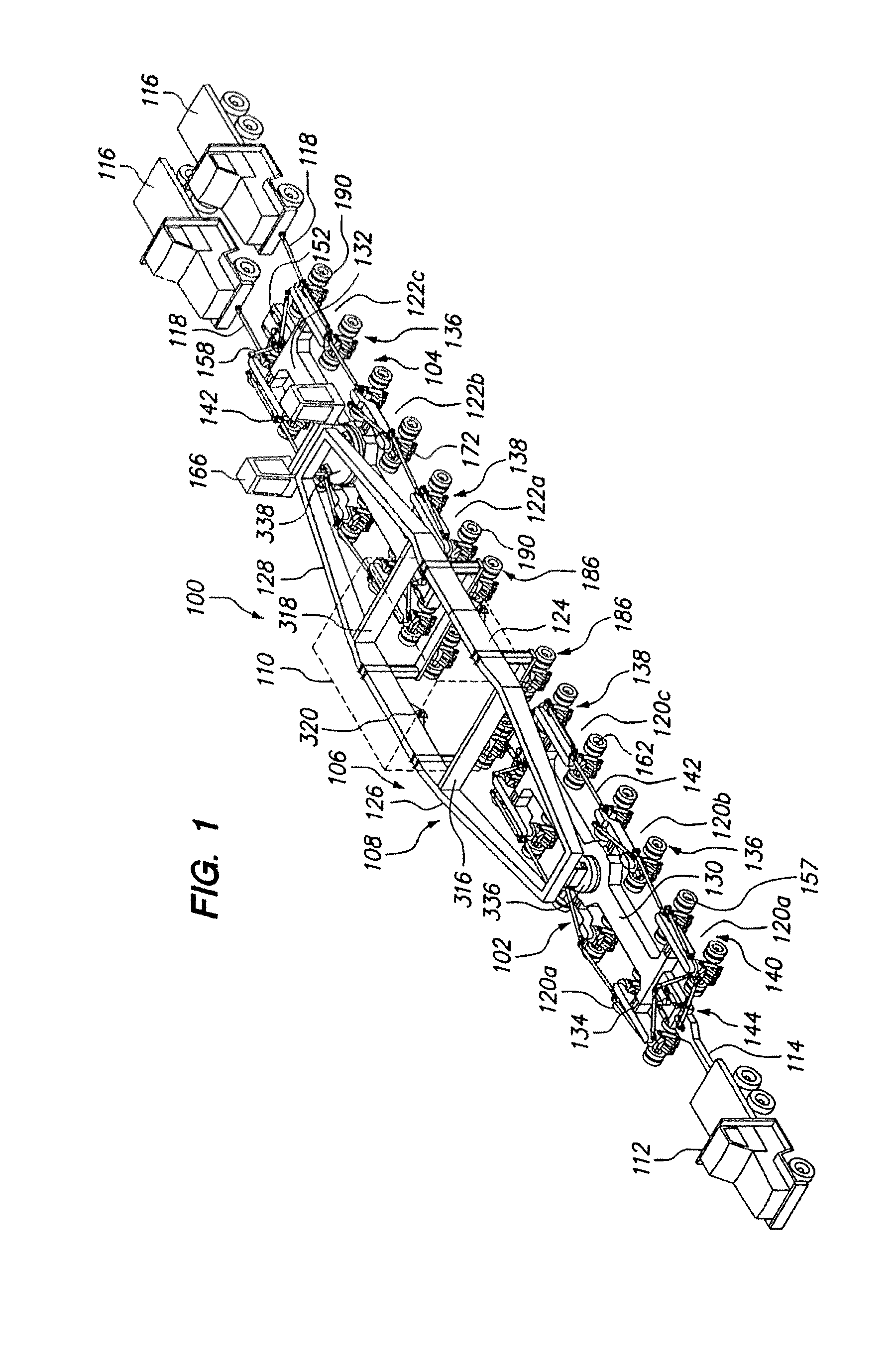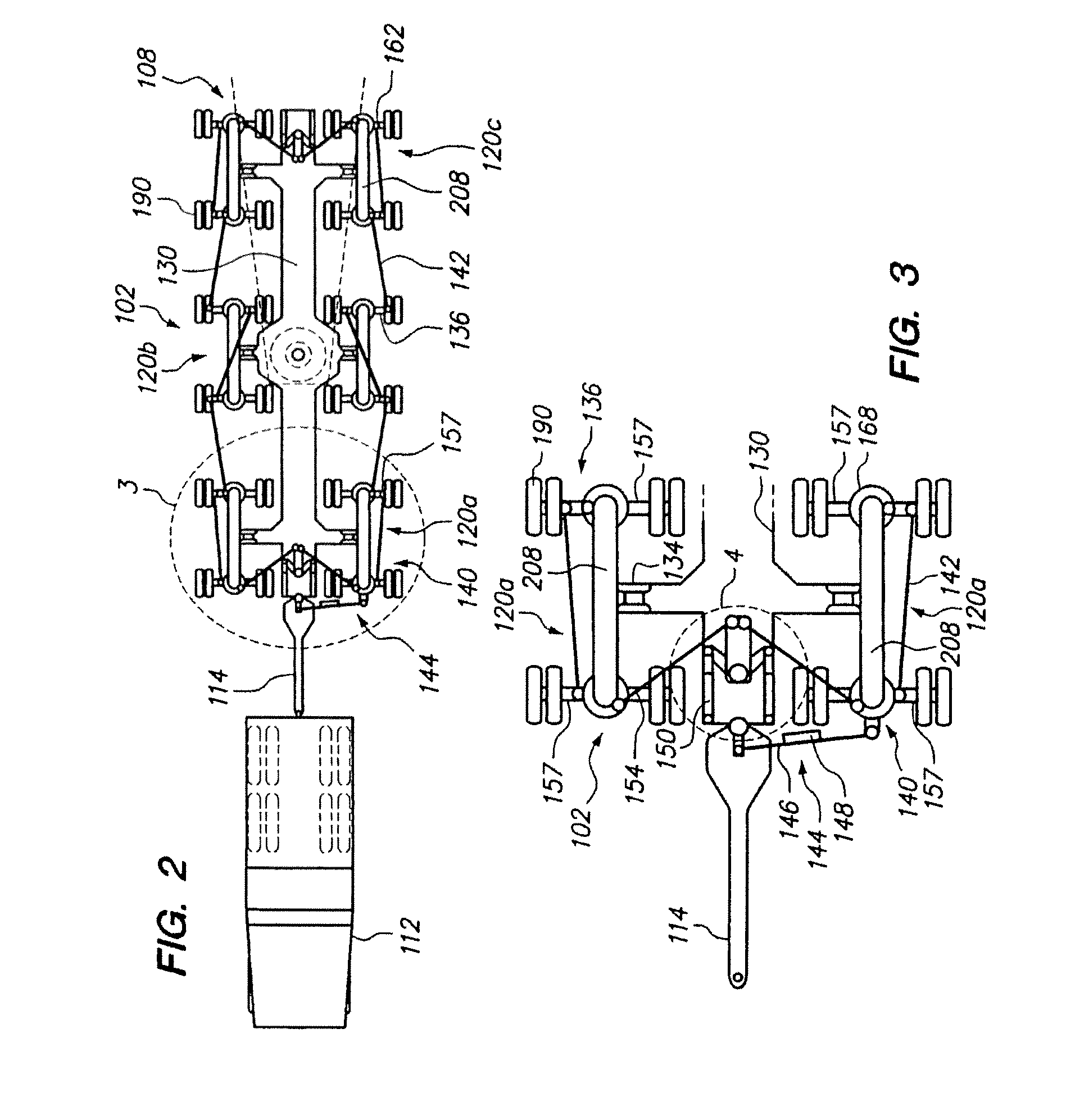Dual lane multi-axle transport vehicle
a multi-axle, transport vehicle technology, applied in the direction of transportation items, tractor steering, agricultural machines, etc., can solve the problems of difficult control of the wide axle heavy transport vehicle system of the prior art, virtually impossible to move in the reverse direction, and difficult to complete and improve the utility of the transport vehicl
- Summary
- Abstract
- Description
- Claims
- Application Information
AI Technical Summary
Benefits of technology
Problems solved by technology
Method used
Image
Examples
Embodiment Construction
[0060]The present invention is directed to a dual lane multi-axle transport vehicle 100 for moving heavy loads such as large industrial equipment weighing hundreds of thousands of pounds. The heavy loads are moved “on-road” over public highways typically during non-peak travel times and often with a police escort. The inventive multi-axle transport vehicle 100 occupies two adjacent highway lanes during the moving operation and typically includes at least a pair of transport modules including a forward module 102 and a rearward module 104 that are mechanically connected by a load bearing means 106 for providing a unitary constructed, high speed, dual lane transport body 108. The transport vehicle 100 is capable of carrying a payload 110 on both the load bearing means 106 and on each of the transport modules 102 and 104 as shown in FIG. 1. Further, the transport vehicle 100 is capable of highway speeds of thirty-five miles per hour when carrying the payload 110.
[0061]The following par...
PUM
 Login to View More
Login to View More Abstract
Description
Claims
Application Information
 Login to View More
Login to View More - R&D
- Intellectual Property
- Life Sciences
- Materials
- Tech Scout
- Unparalleled Data Quality
- Higher Quality Content
- 60% Fewer Hallucinations
Browse by: Latest US Patents, China's latest patents, Technical Efficacy Thesaurus, Application Domain, Technology Topic, Popular Technical Reports.
© 2025 PatSnap. All rights reserved.Legal|Privacy policy|Modern Slavery Act Transparency Statement|Sitemap|About US| Contact US: help@patsnap.com



